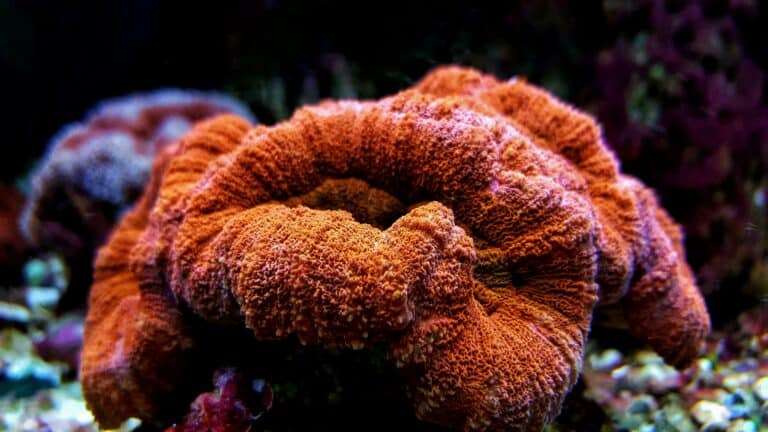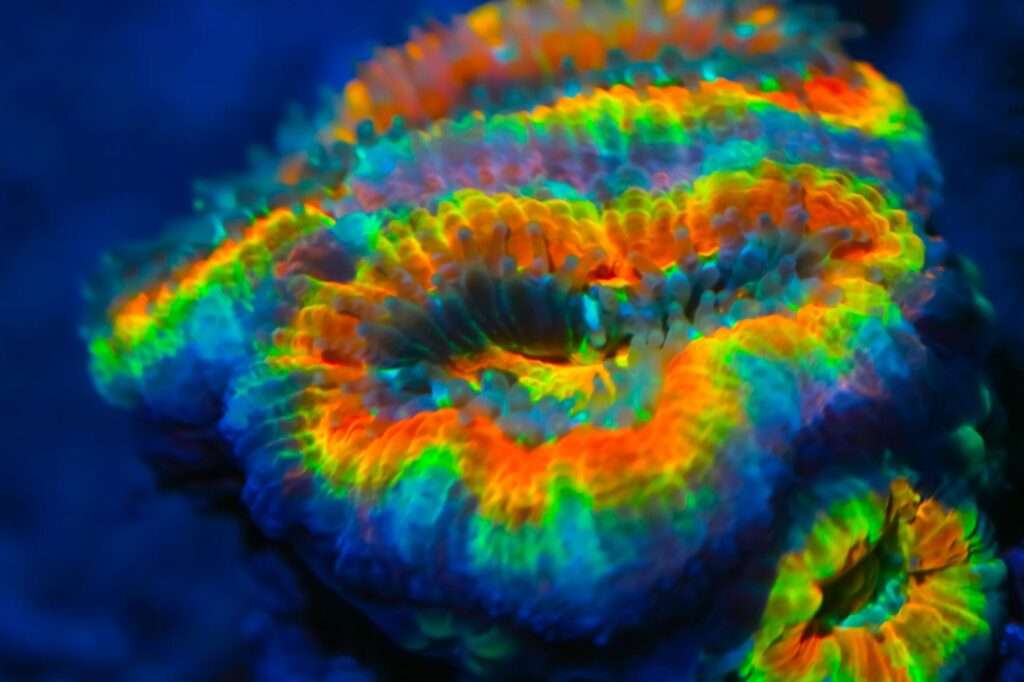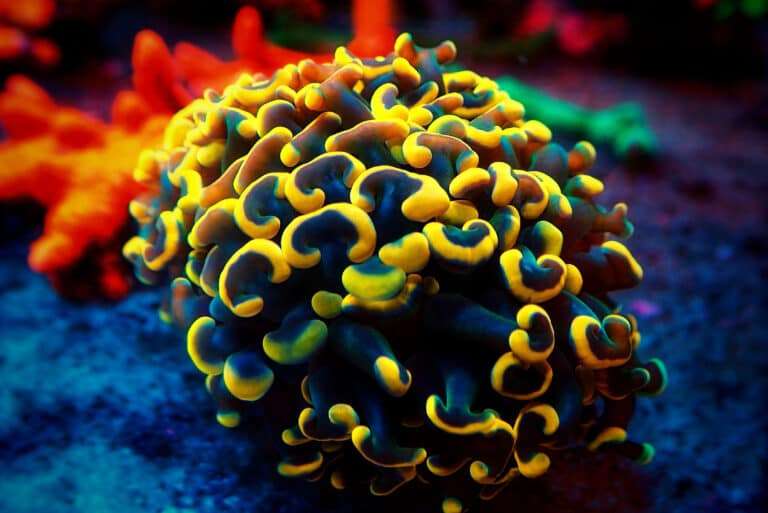
The Open Brain Coral is eye-catching and distinctive. The majority of the time, these corals are discovered as a free-living, lone individual near the foot of a reef, on muddy or sandy bottoms, or in seagrass beds. They frequently coexist with other Fungiidae family free-living corals including the well-known Fungia sp. disc corals. Despite the fact that they can form colonies, they typically consist of a single polyp rather than a wide area. Large fleshy mantles that are characteristic of its polyps are available in a range of vivid colors, including yellow, red, pink, brown, blue, and green.
Habitat
Milne-Edwards and Haime first described the Trachyphyllia genus in 1848. The T. geoffroyi can be found in reef slope bottoms, muddy lagoons, with gentle water flow, and regions between reefs, but not typically on reefs. The Fungiidae family, which includes the genera Diaseris, Cycloseris, Heterocyathus, and Heteropsammia, contains them along with other solitary or free-living corals. The T. radiata can be found in deeper waters between 98 and 131 feet (30 and 40 meters) deep behind covered overhangs. They are allegedly always discovered affixed to a solid substrate.
Morphology
The free-living polyps of the Open Brain Coral T. geoffroyi have valleys with their own corallite walls. The width of their valleys is just under 1/2″ (10 mm) broad, but they can have up to three distinct mouths that can measure up to little over 3″ (8 cm) across. Their massive septa, or “teeth,” on the interior of the corallite wall create a ridging-like appearance under the flesh. Conical in shape, the coral’s base reveals its environment of soft substrate in its natural state. Large fleshy mantles that are characteristic of its polyps are available in a range of vivid colors, including yellow, red, pink, brown, blue, and green. Similar to the Open Brain T. geoffroyi in appearance, the Pacific Rose Coral T. radiata is always clearly circular and typically has a more folded shape. Its valley floor is flattened rather than cone-shaped, and its valley walls are merged. As they mature, they grow in colonies. Variable tones of vivid metallic greens, reds, and pinks are among the colours. The Trachyphyllia corals extend their polyp tentacles at night to feed. Although they can live a long time in captivity, it is uncertain how long they actually live.
In Captivity

- Feeding
The Trachyphyllia genus has evolved a number of feeding techniques. They get some of their nutrients from a marine alga called zooxanthellae through a symbiotic interaction. They can also take in dissolved organic substances and planktonic creatures as well as food particles from the water column. The animal will “accept” larger chunks than a regular mysis but will subsequently regurgitate them up since they are not digestible. Therefore, utilize smaller feeds to prevent your coral from wasting away in less than a year.
- Social Interactions and Compatibility
There are no sweeper tentacles in the Trachyphyllia genus, which is calm. Leather corals will occasionally harm the Trachyphyllia if the water is not properly filtered and carbon is not used to lessen the pollutants these corals release. This coral has been known to be bit by some tangs and angelfish.
Table





